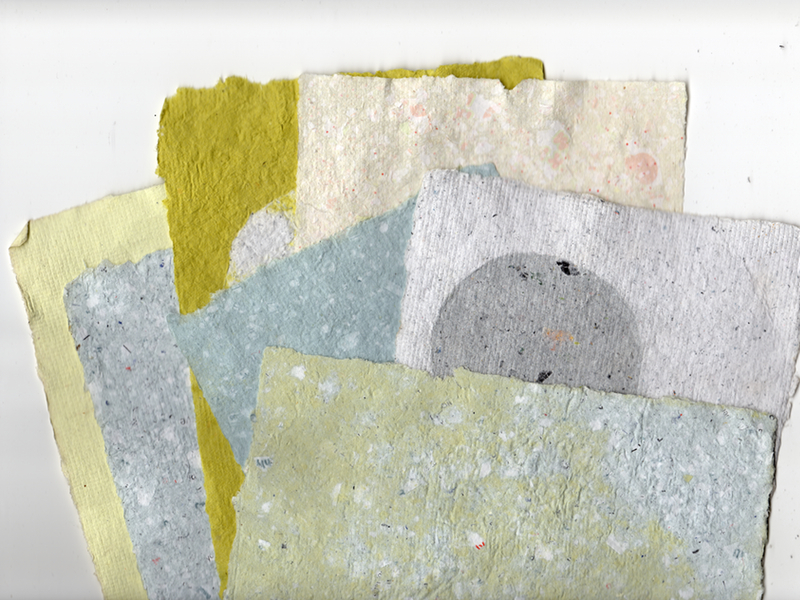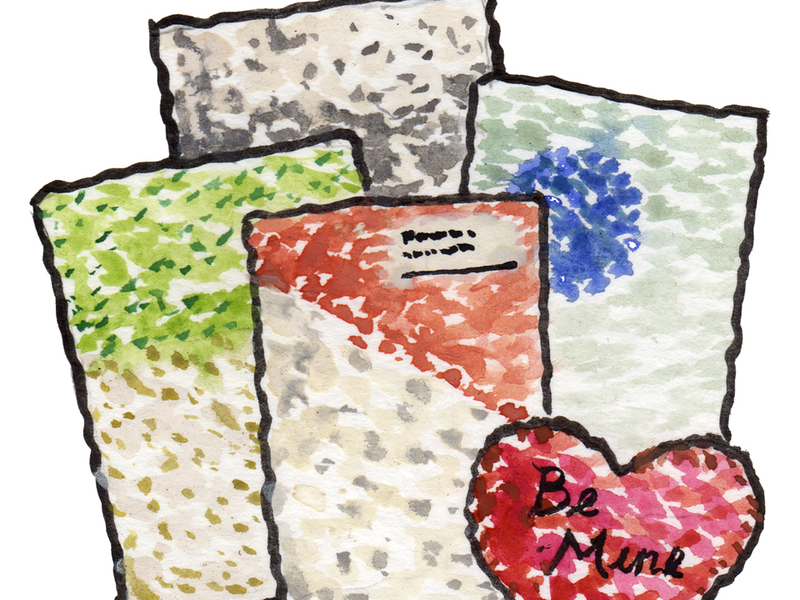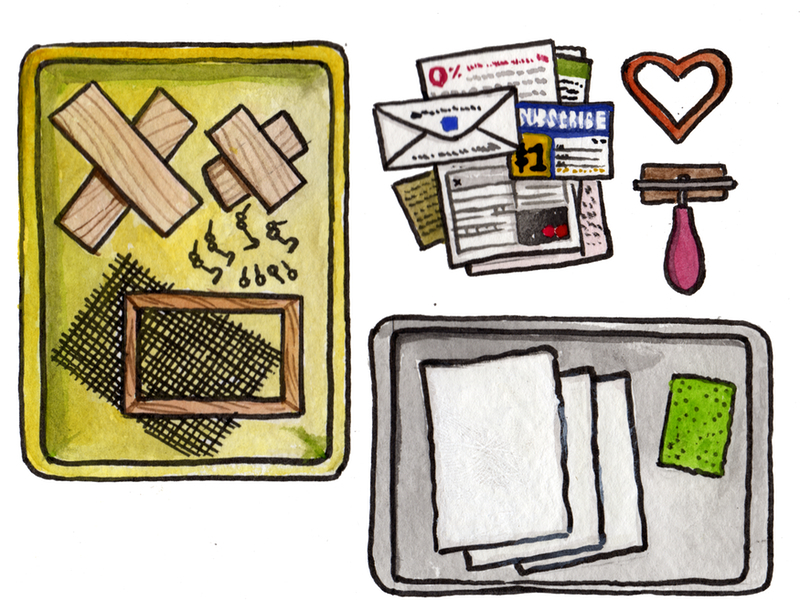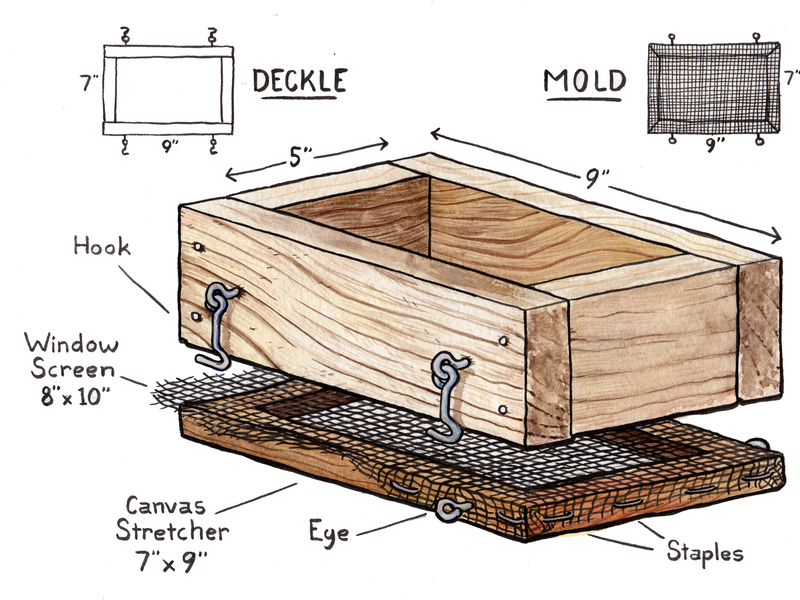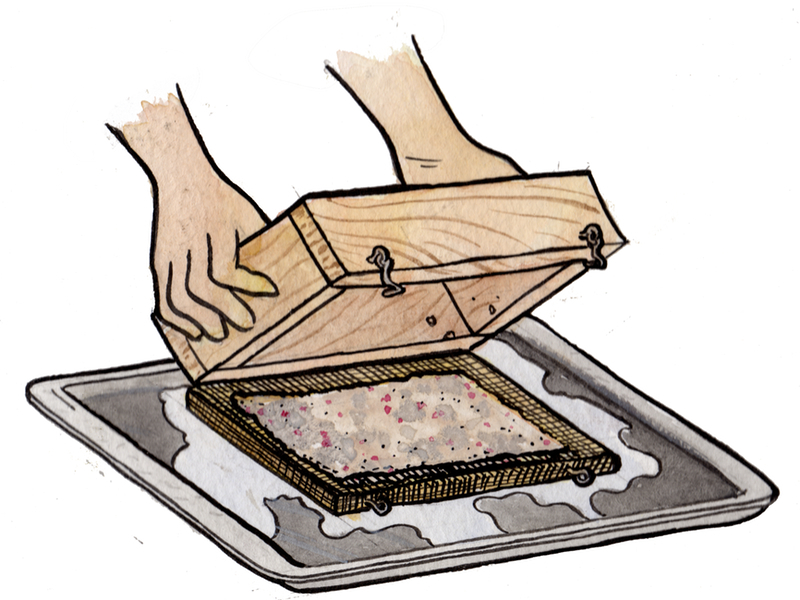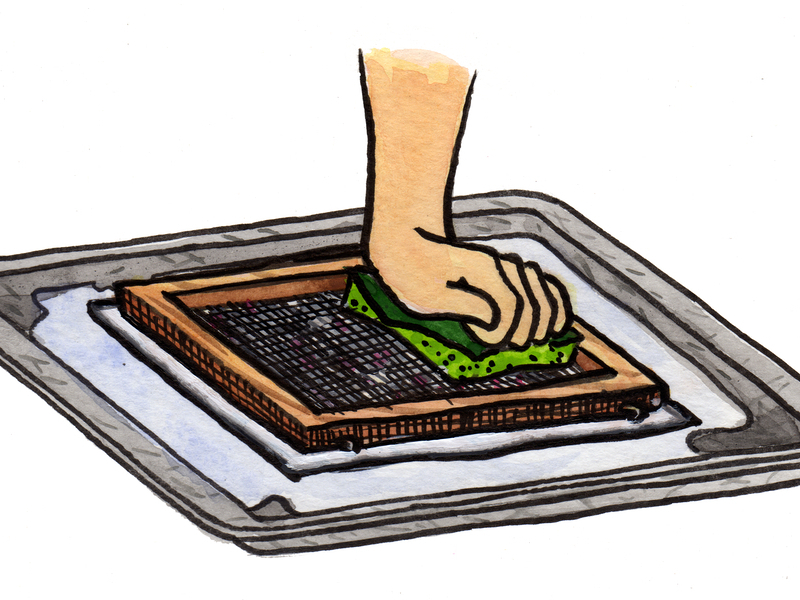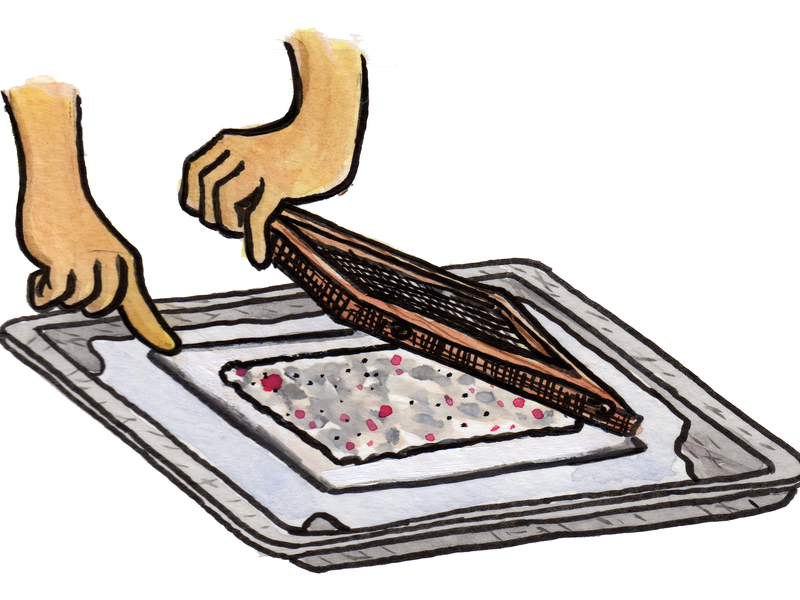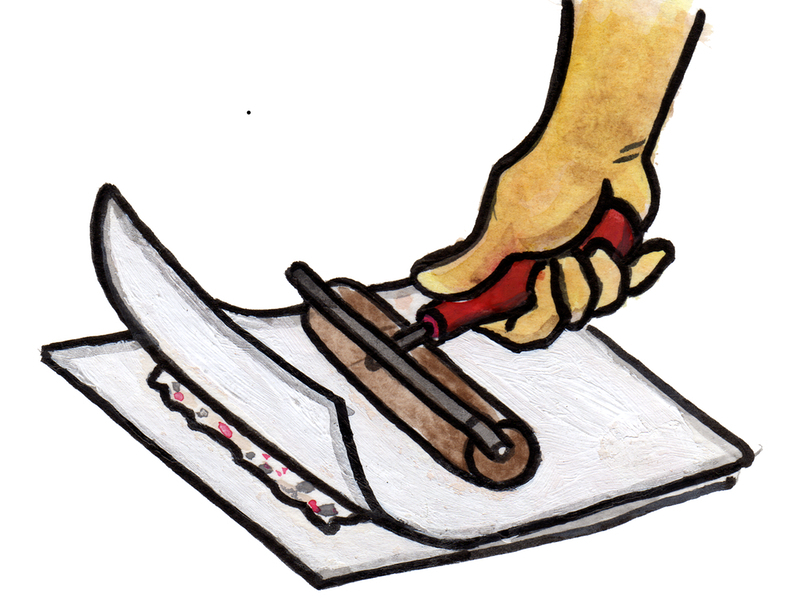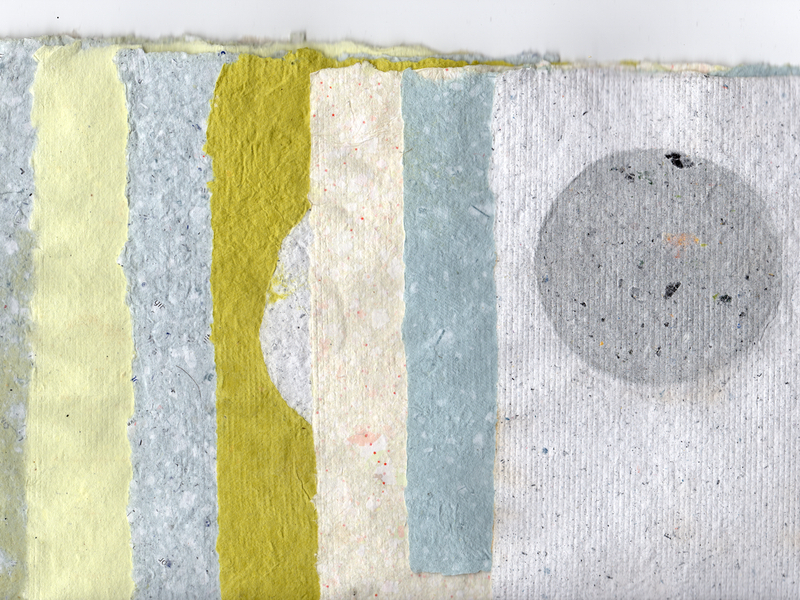The paper you choose to recycle will affect the consistency, color, and feel of your handmade paper. In general, bills and printer papers will create a smoother, more consistent sheet, while magazine pages and glossy papers will tend to chop up more irregularly, creating a more “artistic” look. Experiment with mixing different papers together.
Cut or tear your paper into approximately 1″ square pieces, and place them in the blender with enough water to cover them completely. With the pour method, you can make as much pulp as you want at a time; a good rule of thumb is that whatever the size of your original sheet, the pulp you make from it will make a sheet about 1″ smaller in both width and length.
Blend the paper scraps and water until all large chunks are pulverized (about 30 seconds to 1 minute). The longer you blend the pulp, the smoother and more regular your paper will be. Pulping can dull your blender’s blades quickly, so it’s a good idea to keep a dedicated papermaking blade or get a separate blender (you can usually find one at a thrift store) if you want to make paper frequently.
Personalize your pulp! You can add in a wide variety of materials while blending, including leaves, flowers, glitter, confetti, seeds, and much more. It’s best not to blend ribbons or other long fibers, as they can get wound around the blades. Finally, consider dyeing your pulp (see the Make:Projects guide Natural Dyeing 101).


